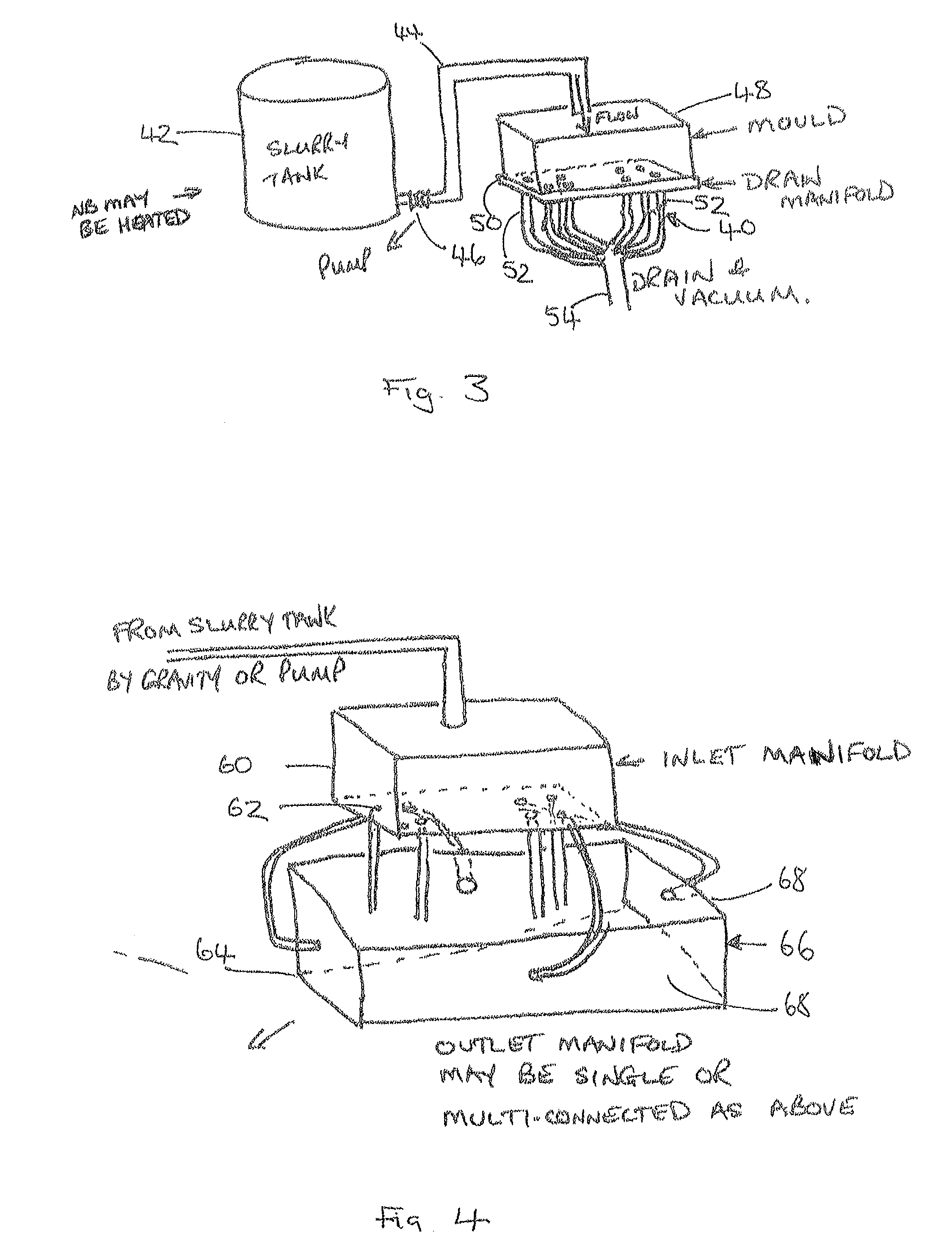Fibre matrix and a method of making a fibre matrix
a technology of fibre matrix and fibre matrix, which is applied in the field of fibre matrix, can solve the problems of significant carbon fibre breakage within the body of the preform, prohibit the use of the preform in high wear applications, and non-woven materials subjected to intensive heat treatment and often shrinkag
- Summary
- Abstract
- Description
- Claims
- Application Information
AI Technical Summary
Benefits of technology
Problems solved by technology
Method used
Image
Examples
example 1
[0255]A 0.0968 m2 sample was prepared using the process of the invention.
[0256]A starting material was prepared using:[0257]480 g of a fibre blend (50 wt % 25 mm carbon fibre and 50 wt % 50 mm carbon fibre)[0258]12 kg of water[0259]120 g of binder (acrylic based binder system)
[0260]This starting material was dropped over a mesh substrate so as to deposit fibres onto the substrate, and then subjected to a vacuum force of approximately 550 torr before then being heated to a temperature of 170° C. under a compression force of 70 N / cm2.
[0261]A sheet of 10.2 mm thick, with a fibre volume of 23% and basis weight of 4000 gm2, was produced. A void content of approximately 69% was present in the product of this example.
example 2
[0262]A further sample was prepared using the same methods and materials as in Example 1. However, 30 wt % of colloidal silica was added to the starting material.
[0263]The final fibre volume fraction in this case was 26%, with a thickness of 8.2 mm and basis weight of 3650 gm2. A void content of approximately 60% was present in the product of this example.
examples 3-8
[0264]In all these examples, a 10 kg, 20 kg or 30 kg batch of the end product was made.
PUM
| Property | Measurement | Unit |
|---|---|---|
| pressure | aaaaa | aaaaa |
| Reynolds number | aaaaa | aaaaa |
| volume fraction | aaaaa | aaaaa |
Abstract
Description
Claims
Application Information
 Login to View More
Login to View More - R&D
- Intellectual Property
- Life Sciences
- Materials
- Tech Scout
- Unparalleled Data Quality
- Higher Quality Content
- 60% Fewer Hallucinations
Browse by: Latest US Patents, China's latest patents, Technical Efficacy Thesaurus, Application Domain, Technology Topic, Popular Technical Reports.
© 2025 PatSnap. All rights reserved.Legal|Privacy policy|Modern Slavery Act Transparency Statement|Sitemap|About US| Contact US: help@patsnap.com



